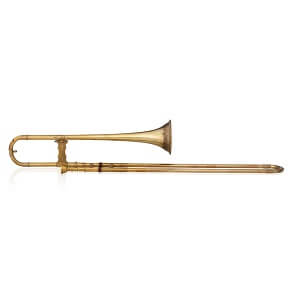Sackbut
 The sackbut, also spelled sacbut, was a brass instrument that arrived on the music scene sometime in the 14th-15th centuries. Its origins are murky, partly because there are so many different names in early manuscripts that could refer to the sackbut. For example, in Italy, there were references to the trompone, and in England, the shagbolt.
The sackbut, also spelled sacbut, was a brass instrument that arrived on the music scene sometime in the 14th-15th centuries. Its origins are murky, partly because there are so many different names in early manuscripts that could refer to the sackbut. For example, in Italy, there were references to the trompone, and in England, the shagbolt.
We don't know who gets the credit for inventing the instrument, but its brilliant use of a double slide for changing pitch was a welcomed, new idea. It gave the horn greater flexibility and agility and better intonation. This slide technique apparently impressed the French who coined the name sackbut from the French words for 'push' and 'pull.'
There were four sizes of sackbuts: alto, tenor, bass, and great bass. This choir of sackbuts became a natural choice for accompanying voices in church worship services. The sackbuts were capable of playing very softly, something not many brass instruments could achieve. A soft, yet full, sound was perfect for supporting the church choirs. The 16th century composer Giovanni Gabrieli wrote many pieces for sackbut and choir for his church, San Marco in Venice.